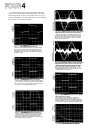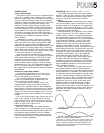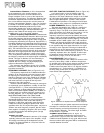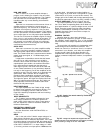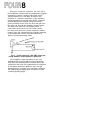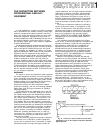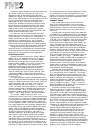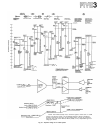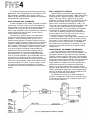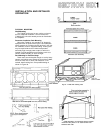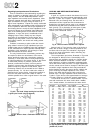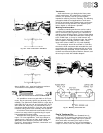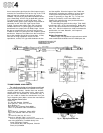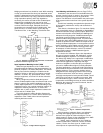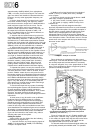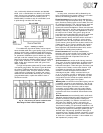
The P-2200 is designed for these wide dynamic range
applications. It has exceptionally low noise figures, and
high headroom capabilities (high power output). In
addition, its operating levels and impedances correspond
with professional requirements.
GAIN OVERLAP AND HEADROOM
Yamaha PM-Mixers have +24dB (12.3 volts) maximum
output levels. This high output level is advantageous in
many situations. One reason is that it assures adequate
headroom for driving the input of any professional
device. High headroom is also important for a mixer that
feeds a professional tape recorder, and in a concert
sound reinforcement system.
Occasionally a "passive" device (no transistors or
tubes) is inserted between the Mixer and the power
amplifier in a sound reinforcement system, or in a
studio monitoring system. Examples of passive devices
are passive graphic equalizers, passive low level crossovers
(frequency dividing networks), pads and resistive isola-
tion
networks.
Passive
devices
always attenuate the
signal
level somewhat. For example, a passive low level cross-
over, when properly terminated, creates a 6dB loss
between the mixer and the power amplifier. Passive
graphic equalizers can create more than 6dB loss at
some frequencies. A mixer with +24dB output drive,
such as a Yamaha PM-Mixer, has considerably more out-
put level than is needed to drive the inputs of most
amplifiers so that passive devices may be used as desired.
This extra output capability (above that needed to drive
the power amplifier) is known as "gain overlap," and is
one of the most important advantages of a Yamaha
PM-Mixer over other mixers, especially non-professional
mixers.
INPUT SENSITIVITY RATINGS
Some auxiliary devices have input sensitivities rated
like this: "nominal input sensitivity: +4dB." Others may
be
rated like
this:
"input
sensitivity: +4dB
for
rated
output." This later rating is typical of many power
amplifiers, including the P-2200. The difference between
these ratings is subtle, but very important. The first
device, has a nominal input sensitivity of +4dB (1.23
volts), and may be capable of peak levels far above +4dB
(1.23 volts); the actual headroom may be stated in
another specification. The second device (the P-2200 is
an example), has a peak input sensitivity of +4dB
(1.23 volts). A +4dB input signal to the P-2200 drives
it
to
full
output.
Thus, the
user
must
be
sure
to
care-
fully select the system's operating levels.
The gain overlap in mixer output drive capability and
power amp input sensitivity let the user choose a head-
room figure for the P-2200; this will be typically 10dB
for speech or concert reinforcement, 15 to 20dB for
high quality music reproduction or recording. The dis-
cussion on Page SIX 5 illustrates the headroom adjust-
ment process.
PROFESSIONAL EQUIPMENT ADVANTAGES
The many advantages of professional equipment
include: balanced lines for hum and noise rejection, low
impedance circuits for long cable runs, high operating
levels for maximum signal to noise ratio, high operating
headroom for low distortion and low noise, and reliable
XL-type connectors that are unlikely to be disconnected
accidentally and that tend not to hum or pop when
being attached. In addition, levels and impedances for
professional equipment are relatively standardized,
which, in many cases, eliminates the need for special
adapters, pads, transformers, or preamplifiers. For these
reasons,
professional
equipment,
even
though its
initial
cost may be higher, will almost always benefit the user
on a long term cost/performance basis.
The P-2200 user realizes all of these professional
benefits. In addition the P-2200 can be used with many
hi-fi or semi-pro devices, such as guitar preamps, semi-
pro or hi-fi tape machines.
Fig. 34 - Typical Gains and Losses in a System



